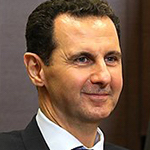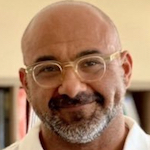A few years ago in London, England, I heard a lecture by the CEO of a large public relations organization. When he finished, he took me aside and said, "Now, tell me what is this 'evaluation' that you Yanks do?"
With that difference as a background, I visited several public relations agencies in London in May 2010. England was in turmoil. Parliament had not negotiated a new Prime Minister. The stress of Parliament’s relations with the media took its toll on public relations agencies. In interviews, I asked officers in public relations agencies about how they handle media relations.
Adam Vincenzini of Paratus Communications prefaced his comments with this background: “London media is small, liberal, opinionated, aggressive, personal and competitive.”
He noted that England has ten national newspapers. In order to survive, each media outlet must be competitive. Editors and reporters have to be sensational in order to attract the readers.
A few years ago, The Sun, a London newspaper, took sensationalism to the ultimate and published on the front page a full-page photograph of the captive Saddam Hussein wearing only his white briefs. American newspapers, as far as I know, did not publish that photo, although it was available.
This summer another English newspaper published a full-page photograph of Lance Armstrong after he had an accident and fell off his bicycle. Armstrong was shown with a bloody face in a full-color photograph. I couldn’t find a publication of this photo in a US newspaper. However, the photograph is on ESPN’s website.
Vincenzini said that in order to woo the journalists, he has taken reporters to cricket matches and to lunch. He said, “In England, the media fits around the people, not the people adjusting to the media.”
We are dealing with cultural differences in ethical behavior. I’ve worked for several newspapers and for two television stations in the US. In all of those jobs, I was given a list of rules of ethical behavior I was to follow.
The news director of a TV station explained to me that we did not show a gurney carrying a body, even a covered body. Even worse, we would not show a covered body on a gurney with one hand flopping from beneath the sheet. We would not show a pool of blood on the street or sidewalk. We would not ring the doorbell and attempt to interview a grieving family member.
At one newspaper, I was told never to accept gifts. I wrote a business ethics column for that newspaper and was often invited to speak to civic groups. After I spoke the hosts often gave me a gift, usually a pen and pencil set. I graciously accepted the gift and later passed it to my editor. She, in turn, gave these writing instruments to the public schools for students who didn’t have pens or pencils.
Annabel Brodie-Smith, the communications director of the Association of Investment Companies in London, said she takes reporter to lunch in order to provide an ample background on a public relations activity. Basically, she attempts to develop the story’s relationships with the media and to provide the media with useful context for the story.
I’ve worked in a public relations agency and found that providing a meaningful context for a story or a public relations project often took more time and energy than a news conference. Often, it was necessary to sit with a journalist and explain the background – this could take an hour or more (time for lunch). But, we could never take a reporter to lunch or dinner.
Brodie-Smith keeps a focus on the international newspapers. She’s given journalists money and champagne. She’s provided journalists junkets to Russia and to Japan as gifts.
Several years ago, in Burcharest, Romania, I asked the president of a public relations firm about how she handles globalization. She replied, “There’s no such thing as globalization. All public relations is local.”
As technology shrinks the world and as more American public relations companies have clients in other countries, we must learn to work with journalists around the world. We must learn the local cultural norms of those countries. Their codes of journalism ethics are different than ours – that doesn’t mean that one is better than the other – simply different. And, despite efforts to standardize an international code of public relations ethics, in practice that hasn’t happened and it may never happen.
Our problem is to learn the cultural differences and adapt. We must remember all public relations standards of media relations are local.
David Ritchey, Ph.D., is professor of The School of Communications, The University of Akron.


 Edelman is providing communications support to Panama’s Ministry of Commerce and Industries under an agreement capped at $97,100 per month.
Edelman is providing communications support to Panama’s Ministry of Commerce and Industries under an agreement capped at $97,100 per month. Ballard Partners has recruited State Department veteran Matt Bryza as a senior policy advisor.
Ballard Partners has recruited State Department veteran Matt Bryza as a senior policy advisor. Teneo has extended its contract with the Salama Bint Hamdan Al Nahyan Foundation for an additional four months to July 31, adding another $1.8M in fees to the New York firm’s coffers.
Teneo has extended its contract with the Salama Bint Hamdan Al Nahyan Foundation for an additional four months to July 31, adding another $1.8M in fees to the New York firm’s coffers. The Syrian Kurdish militia recruits Jim Dornan Strategies to press Congress for continued support in their battle against ISIS and Syrian president Bashar Assad.
The Syrian Kurdish militia recruits Jim Dornan Strategies to press Congress for continued support in their battle against ISIS and Syrian president Bashar Assad. The Government of Hungary has hired Strategic Improvisation Inc. to generate positive media coverage and combat negative press coverage of the Central European country. (6 reader comments)
The Government of Hungary has hired Strategic Improvisation Inc. to generate positive media coverage and combat negative press coverage of the Central European country. (6 reader comments)


 Have a comment? Send it to
Have a comment? Send it to 
No comments have been submitted for this story yet.